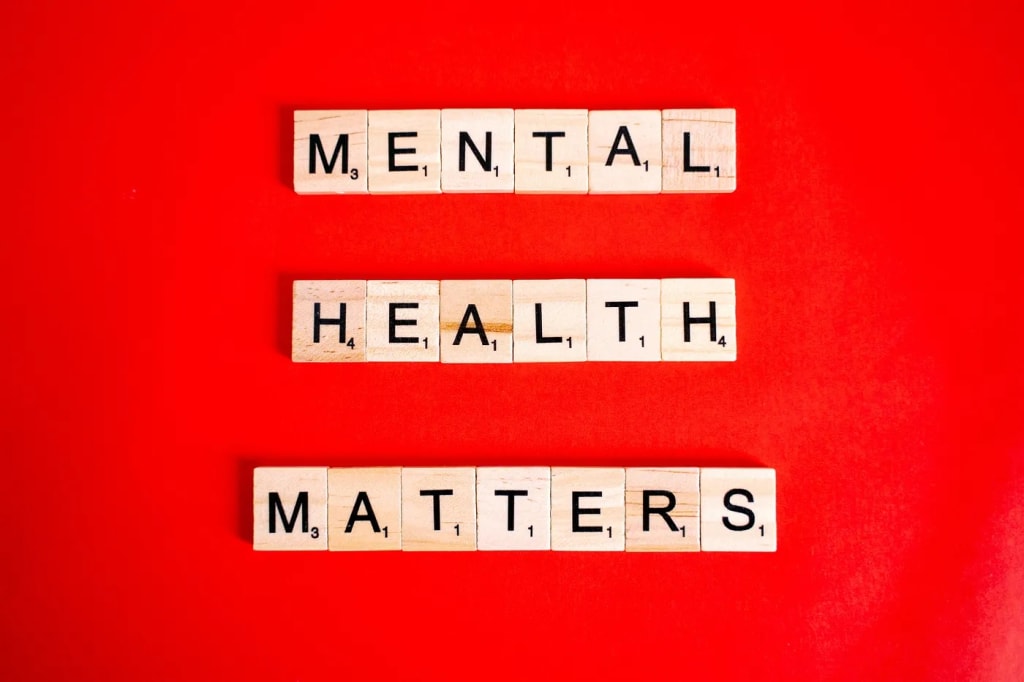Reducing Mental Health Stigma
One of many intervention approaches to increase help seeking behaviors and improve population-wide mental health

In response to the growing prevalence of global mental health issues, many experts in mental health professions are attributing higher importance to the need for individuals with mental health problems to seek mental health treatment and support. However, despite these emphasized concerns, many people continue to struggle in their battle to seek help from others for their mental health difficulties.
Mental health scholars suggest that roughly 70% of people with mental illness do not seek treatment for their issues and the most commonly cited factor for this outcome relates to the effect of mental health-related stigma. Furthermore, one systematic literature review identified a negative relationship between mental health stigma and help-seeking behaviors for mental health issues.
It is therefore evident that stigmatization of mental health issues exists as one of many deterrents from encouraging individuals with mental health issues to seek adequate support from those in their social networks or mental health professionals.
In such terms, reducing mental health-related stigma is of significant importance in encouraging individuals to seek the level of mental health support their conditions require and improving mental health states at the level of population-wide measures.
In this story, an explanation of the key features relating to mental health stigma and evidence-based intervention schemes to reduce mental health stigma will be discussed and evaluated with reference to key mental health theories and research practices.
Definition of mental health stigma
The first approach to reducing mental health issues should revolve around the issue of providing clear definitions and conceptions of mental health stigma and how their dimensions impact help-seeking behaviors for individuals with mental illness.
While there is no current definition of mental health-related stigma, many academics and scholars have focused on using general definitions of stigma to understand its impact on a mentally ill person’s motivation to access comprehensive and widely available services for mental health treatment.
One of the most commonly used definitions to explain stigma stems from Erving Goffman’s conceptualization that defines stigma as the extent that certain individuals or groups of people are perceived as non-human by various other individuals or groups in society.
However, this definition has been expanded to refer to individuals and groups whose behaviors and characteristics differ from conventional societal norms and values. Building from these conceptualizations, several dimensions of stigma relating to mental health issues have been identified.
The first identified dimension concerns the labelling of mentally ill persons as dangerous and a threat to society. Many people with mental health issues are considered a threat to the safety and wellbeing of others to the extent that many people will attempt to avoid those with mental health problems in fear for their own safety.
Research literature has documented the degree to which perceived dangerousness accounts for the highest influence on the rejection of mentally ill people, typically expressed in long social distance from mentally ill persons. This perceived level of dangerousness is largely attributable to the stereotypes associated with mental illness such as having negative or unpredictable moods or lacking key social skills.
In such terms, a mentally ill person’s deviance from conventional norms and values generates a feeling of discomfort and unease among some people which encourages and reinforces their need to avoid people with mental health disorders.
In particular, people with schizophrenia disorders have been the subject of negative media reports that label them as dangerous in response to violent attacks conducted by schizophrenic individuals. In 1990, attacks on prominent German politicians were conducted by two patients with confirmed schizophrenia diagnoses which attracted nation-wide media coverage.
It is understood that the dangerous labels attached to these individuals and schizophrenic people, in general, were responsible for inducing widespread fear of schizophrenic and mentally ill persons among the German public which increased their social distance from individuals with known or confirmed schizophrenic or mental health issues.
Controllability is another important dimension to consider in the stigmatization of mental health issues. This concept refers to the extent to which people with mental health problems can exercise control over their disorders.
Generally, mental health issues are considered to be controllable conditions that can be effectively managed by individuals independent of psychiatric or therapeutic intervention. In consequent terms, those with mental health issues are often blamed for their conditions under the assumption they are unwilling to practice self-regulation of their own emotions.
This misconception leads many to believe that such individuals cannot be treated through therapeutic interventions as they are perceived as being unlikely to co-operate in the therapeutic process to facilitate recovery.
Moreover, mental health conditions are often viewed as more controllable than physical health conditions with drug-related disorders being considered the most controllable of all mental health conditions.
Consistent with notions of pity around mental illness, those conditions which are less controllable are often the most pitied and least stigmatized conditions for which professional help is most encouraged. Controllability often functions in parallel effects with the next dimension, Concealability.
Concealability refers to the degree of visibility of mental health issues and their psychiatric symptoms. Mental health issues that are understood as being highly visible are often the most stigmatized and discriminated conditions as their symptoms and effects are easily observable in the view of others.
This hypothesis can usefully explain why conditions such as schizophrenia are highly stigmatized in comparison to less extreme and visible conditions such as anxiety and depression.
Schizophrenic symptoms are usually behavioral which means they are observable among others and therefore assumptions of controllability are frequently high whereas the symptoms for conditions such as anxiety and depression are predominantly emotional and thus often remain concealed for which controllability is then assumed by others to be low.
The final dimensions, course, stability and disruptiveness, although unique in definition, are often interrelated and usually interact to reinforce stigmatization of mental health issues. Course and stability refer to people’s perceptions regarding the possibility of recovering from mental illnesses.
In comparison to physical conditions, mental health problems are often perceived as being more unstable than physical health issues, meaning people with mental health conditions are viewed as being less likely to recover from their illness than people with physical illness.
Moreover, those with severe mental health conditions, such as schizophrenia, are perceived by many as being wholely unable to recover from their disorders which significantly undermines and reduces potential for positive treatment outcomes for schizophrenic patients.
The other interrelated dimension, disruptiveness, contextualizes mental health stigma in relation to the level of social and socio-economic disadvantage experienced by individuals with mental illness.
Generally, those diagnosed with mental health issues are more likely to experience stress and dissatisfaction in their relationships with others and are less likely than mentally healthy persons to achieve variable socio-economic success.
Conversely, those with lower satisfaction in their relationships and experiencing socio-economic deprivation have a higher predisposition to developing mental health problems as compared to those with higher satisfaction in their relationships and affluent socioeconomic status.
These trends are impacted by disruptiveness to the extent that levels of social and socio-economic success are mediated by the influence of the impacts of mental illness on these phenomena and how these phenomena can differentially affect mental health in adverse terms.
Overall, mental health issues that are perceived as less disruptive are less stigmatized than mental health issues that are considered highly disruptive which can have many implications in terms of how low socio-economic status individuals are stereotyped in view of their mental health problems.
In defining mental health stigma mental health researchers must consider the degree to which mentally ill people are perceived as dangerous, the over-estimated extent to which people with mental health problems can control their mental illness, the visibility of their illness and related symptoms, and the manner to which their mental health problems are perceived as disruptive or unstable.
Based on the evidence presented in support of these dimensions, their concepts should serve as a useful framework from which to conceptualize mental health stigma and inform relevant research and intervention practices to help raise awareness and reduce the stigmatization of mental health issues.
Mental health stigma in India

While the idea that stigmatization of mental health issues operates as a restrictive barrier to encouraging people with mental health problems from seeking therapeutic treatment is a universally accepted viewpoint, the extent of its prohibitive effects is distinguished between different cultures.
India’s mental healthcare system and their cultural perceptions of mental illness also serve as a useful framework from which to understand how mental health issues demote help-seeking behaviors for sufferers in India and how their cultural perceptions of mental illness in comparison to other cultures predicts their differences in help seeking behaviors among India’s mentally ill population as compared to other global nations.
Global estimates suggest that roughly 20% of young people worldwide experience a common mental health problem but this figure is only reported to be 7.3% of India’s youth population. This comparatively low figure does not reflect a seemingly low prevalence of mental health issues but is instead attributable to a notion in which a prominent trend of mental health stigmatization is discouraging people in India from seeking the level of mental health support they require.
In India, many factors that predict stigmatizing attitudes towards people with mental illness are related to the general definitions of stigma as previously discussed in this story. Research in the rural community of Maharashtra found that social distance from people with psychosis was higher than any level of social distance from people with depressive disorders.
Perceptions regarding psychotic individuals as more dangerous than depressed people were identified as being the most common factor for explaining these differences in attitudes towards these two groups.
Psychotic disorders were largely attributed to biological and genetic factors for which psychotic individuals were perceived as lacking control over their conditions whereas the causes of depressive conditions were often associated with family and personal issues which depressed individuals were viewed as having the ability to exercise control over.
In such terms, both the dangerousness and controllability dimensions can be used to explain the high prevalence of stigmatizing attitudes towards mentally ill people in India, especially towards those with severe mental health conditions such as schizophrenia.
However, additional research is needed to explore how the other dimensions of mental health stigma impact discrimination of mental health issues in India and how this manifests in a lack of confidence for India’s mentally ill population to seek treatment for mental health issues.
Nevertheless, these findings provide robust evidence that people with mental health problems in India are often stigmatized for reasons that are common in western cultures. Although, experiences of perceived mental health stigma in relation to gender in India contrast those that are frequently observed and documented in western societies.
In western cultures, men are more likely than women to experience perceived stigmatization for mental health issues but in India, the opposite trend has been noted, women are more likely than men to experience stigma associated with mental health problems, a trend that corresponds accurately to the fact that women are more likely than men to experience mental illness.
However, the extent to which stigma is experienced by both men and women differs significantly according to social context. Men with schizophrenia tend to report high levels of stigmatization in occupational settings while women’s experiences of mental health stigma are more prominent in family and household environments, a trend that reflects a universal set of cultural roles men and women are expected to adopt.
Although, women often achieve higher and more improved clinical outcomes than men which manifests in better social and occupational functioning for females as compared to males. Subjective attributions for mental health issues are another important concept to consider in differences in perceived stigma for mental health problems in India.
Research into women’s experience of mental health issues in India found that women are more likely to assume internal attributions for the cause of their mental disorders while men are more likely to explain the development of their mental health problems according to the influence of external attributions.
This is despite the fact that many women’s experiences of sexual abuse or living within family households that place a high value on gender conformity leave women at a higher predisposition for mental health problems than men.
Another avenue from which to examine India’s prevalence of mental health stigma is social class. In contrast to western cultures, in which experiences of stigma are more likely to be described by low-socioeconomic status individuals, Indians with high socioeconomic status are more likely to report experiences of stigma as compared to mentally ill Indians from lower socioeconomic backgrounds.
The occurrence of these contrasting findings are considered most likely to be associated with causes relating to differences in family dynamics between India’s working and middle-class families. One of these causes addresses issues with financial stress in Indian middle-class families as a byproduct of their unstable socio-economic status, despite their position of relative economic comfort.
This level of uncertainty encourages many Indian middle-class families to pressure children into pursuing livelihoods and opportunities that were inaccessible to them in their childhood phases and increase the socioeconomic status of the family as a whole.
Education and academic expectations are also accounted for in explaining the prevalence of mental distress in Indian middle-class families and their need to increase their social status within Indian society.
While education and academic achievement are highly regarded in middle-class families of all cultures, the emphasis on educational attainment is higher in Indian middle-class families in light of the aforementioned need for these families to enhance the socioeconomic position of their families in intergenerational terms.
This prominent need among Indian middle-class families comes typically in response to an awareness of growing competition in India’s labor market for which an increasing number of occupations require educational qualifications in addition to relevant skills and experience in respective work industries.
Indian middle-class families also experience stress in relation to disagreements over child-rearing practices. Strict parents in Indian middle-class families will often place emphasis on ensuring children are well behaved and encourage them to pursue a high standard of education that will provide them with career stability and the opportunity to start a successful and financially secure family of their own through marriage.
On the other hand, lenient parents in Indian middle-class families will raise children to pursue their own choices that bring satisfaction and contentment in their lives and enable them to achieve a sense of contribution to the lives of others and their communities.
Disagreements over household responsibilities also contribute to exacerbated stress experienced by Indian middle-class families. Many females often report frequent experiences of stress derived from a lack of household and family involvement from their husbands which forces them to undertake the majority of family and household responsibilities.
It is understood that many men in Indian middle-class families prioritize work-related tasks over family commitments for which work forms a large part of men’s identity in Indian society.
The overwhelming prevalence of mental health stigma in India perfectly illustrates the exact mechanisms that underlie how societal stigma towards people with mental health problems discourages people with mental health disorders from seeking the level of therapeutic treatment their conditions require.
In similarity with other cultures, India’s mental healthcare system should prioritize the implementation of intervention methods to reduce the prevalence of mental health-related stigma by debunking some of the culturally expressed prejudices towards people with mental illness.
Interventions to reduce stigma and discrimination towards people with mental illness for both India and the rest of the world will be discussed in the subsequent section of this story.
Interventions to reduce stigmatization of mental illness and promote help-seeking behaviors

Considerable research studies have been conducted to systematically evaluate the effectiveness of several intervention methods to reduce mental health related stigma. Intervention designs targeted towards members of the general population produce varying effectiveness in terms of improving the dimensions of knowledge about mental health issues and attitudes towards people with mental illness.
Education usually documents the highest degree of effectiveness in reducing mental health stigma according to both dimensions. In the late 1980s, Iran’s primary health care system adopted mental health first aid training programs as part of an initiative to improve awareness and attitudes towards people experiencing mental health difficulties.
Improvements in both knowledge and attitudes towards mental illness were noted outcomes that have evidenced a successful implementation of mental health first aid training programs in reducing stigmatization of mental health problems in Iran’s primary healthcare system. Therefore, education should feature as one of many key components in intervention delivery to reduce mental health stigma.
Social contact has also been shown to elicit positive changes in public discourse of mental health issues. Social contact in the fulfilment of four main criteria; equal status between group members, common goals, co-operation and institutional support has been noted as an effective intervention protocol to reduce prejudice towards mentally ill persons as well as racial and ethnic minorities.
A systematic analysis of 51 studies reveals that inducing social contact with a mentally ill person as a supplement to education about mental illness facilitates greater reductions in mental health stigma than education alone.
However, this literature review documented the extent to which improving knowledge of mental health problems is easier than reducing attitudes towards people with mental illness, particularly in relation to tendencies to socially distance from mentally ill persons.
Nonetheless, intervention initiatives should effectively utilize the extensive range of education programs available and provide opportunities for social contact to maximize positive effects in reducing stigmatization of mental health problems.
Mass media campaigns have also demonstrated effectiveness in improving knowledge and attitude dimensions toward mental illness. One study in Norway focused exclusively on the nationwide coverage of a TV show, broadcasted by the Norwegian Broadcasting Cooperation, raising awareness of mental health issues from which a sample of 574 viewers were selected for surveying.
Moderate improvements in knowledge and attitude dimensions were observed among all respondents with female respondents expressing a slightly higher degree of awareness as compared to male respondents.
Both sex groups reported increased awareness of the fact that suicide accounts for a significantly greater proportion of deaths than traffic accidents and were more likely to recommend uptake of mental health services for minor mental health problems upon viewing the show.
The production and sharing of destigmatizing mental health content also serve the potential to reduce prejudicial attitudes towards people with mental health problems. In the UK, Asda Supermarket was publicly criticized on Twitter for advertising a mental patient costume which evoked a mass of online public outrage.
Shortly after its broadcast on national news coverage, Asda was forced to remove the costume from sale and offer substantial donations to the “Time to Change” mental health charity. In such terms, raising awareness of mental health issues through the promotion of mass media campaigns serves as another key consideration in intervention schemes aiming to reduce stigma relating to mental health issues.
General Campaigns, typically in the form of charity work, have also been effective in reducing stigma in relation to both knowledge and attitude dimensions of mental health.
BeyondBlue, Australia’s national nonprofit organization for raising awareness of depression, has achieved considerable success in improving knowledge and attitude dimensions connected to depression. National surveys were conducted to assess and compare knowledge and attitude dimensions between states with high exposure to the campaign and states with lower exposure.
Survey results yielded a significantly higher degree of improvement in knowledge and attitude dimensions for states with high exposure as compared to states with low exposure.
However, significant reductions in mental health stigma were still noted in states with low exposure in likely consequence of the multi-faceted approach adopted by the campaign which entailed delivery of educational meetings in town halls and the curation of depression awareness in mass media campaigns.
A similar campaign in New Zealand, Like Minds Like Mine, has also documented effective intervention utilization in their mission to raise awareness of general mental health issues.
Questionnaires were delivered to a random sample of respondents in recent use of mental health services in New Zealand to examine knowledge and attitudinal changes towards individuals with mental health challenges.
Reported improvements in knowledge and attitude dimensions were a noted observation from these findings and almost half of all respondents attributed these improvements to the “Like Minds Like Mine” campaign.
Based on the evidence presented in support of general campaigning and its effective incorporation and use of other intervention protocols to reduce mental health stigma, general campaigning practices should also be implemented as part of a broad intervention scheme to improve awareness of mental health issues and the experiences of sufferers.
Final thoughts

Reducing stigma around mental health issues at population level presents a series of challenges for mental health practitioners and policymakers in terms of the amount of stigmatization that is prevalent in all aspects of society which mainly include family, education, and media agents of socialization.
However, while those practicing in the mental health industry are unable to exercise control over the number of biases and misconceptions expressed relating to mental illness by the general public, effective utilization of the evidence-based interventions referred to in this story provides mental health service workers with a recommended set of practices which demonstrate potential to counteract the negative effects of mental illness stigmatization and improve knowledge and attitude dimensions in how people perceive and interact with people experiencing mental health difficulties.
Expanding the delivery of mental health education through general and mass media campaigning and increasing social contact between mentally ill and healthy persons can reduce stigma around mental illness by increasing understanding and empathy for the experiences of those struggling with mental health issues and prompt encouragement to seek support for mental health problems.
Collective efforts to encourage each other to seek help and support for mental health difficulties possess a strong potential to restrict the ability for mental illness to prevail and govern every aspect of people’s lives and create a much happier and mentally healthier society for everyone.
Thanks for Reading!
About the Creator
Andrew-Stuart
My passion is to write stories related to the topics of psychology and mental health | (Bsc) Hons Applied Psychology Student at Glasgow Caledonian University 😁






Comments (1)
Well researched and very informative.